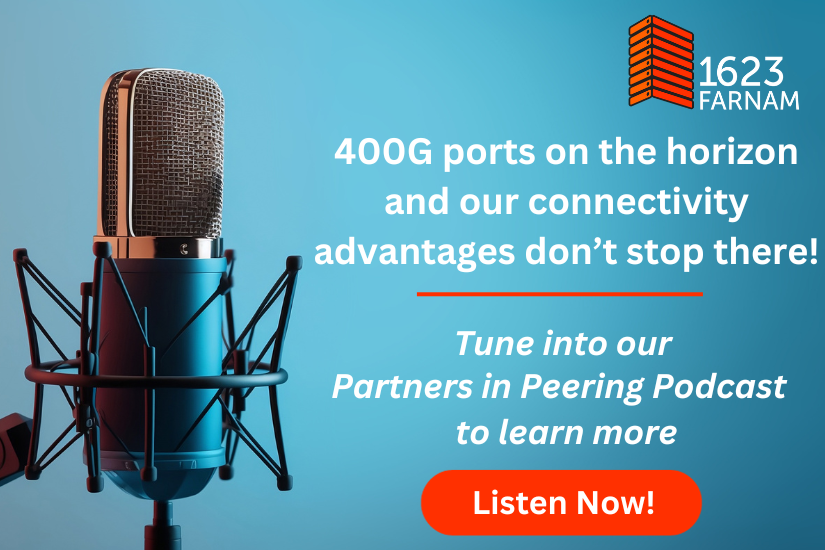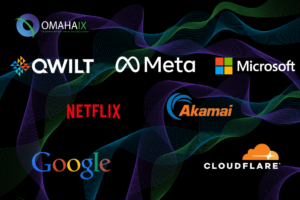We’re not shy when it comes to shouting out 1623 Farnam’s biggest assets. Being centrally located in Omaha, Nebraska, in the middle of the U.S. (and at the confluence of major fiber lines) automatically gives our carrier-neutral, 80,000-square-foot data center distinct connectivity advantages — but we don’t stop there.
At our interconnection facility, we know the power of connectivity, which is why we’ve built a robust ecosystem that includes 60 carriers — and a whole lot more. A major part of that ecosystem is Omaha IX, our privately owned and managed on-site Internet Exchange. Many of our partners, including ISPs, carriers and content providers, have leveraged peering at the Omaha IX for better speed, control and optimized performance — ultimately providing a better user experience. Plus, they’re finding peering to be so advantageous that they want more.
Earlier this year, for example, Hurricane Electric upgraded its port from 20G to 100G, and the California-based ISP is hardly alone in choosing to take its peering capacity up a notch. A host of content providers and hyperscalers are in the process of or have already purchased additional ports.
Check out a running list of recent updates here (and read up on recent expansion news and more):
The reasons why these organizations are pushing for more peering are clear at Omaha IX. You can see when traffic at the IX spikes because a popular new video game is released or during major live sporting events. Peering at the exchange allows these high-bandwidth events to be even better experiences for customers, and our partners are seeing how that brings value in this ever-competitive broadband market.
What’s exciting for us is that this will continue to grow — with 400G ports next on the horizon — as connectivity demands increase organically and with the growing requirements of ultra-low latency applications, including cloud gaming, AI and VR. And yet, with all the success companies have had with peering, even some of the largest, most well-known companies in the world, we often find the concept is foreign to many businesses. For the record, it’s when two independent networks directly connect in an IX to exchange traffic, foregoing traditional third-party transit providers as intermediaries.
We’re always interested in finding new ways to deliver added value, expertise or points of interest … which leads us to an exciting announcement:
We’ve just launched an informational, collaborative new video podcast series: Partners in Peering.
Each episode, we will tackle a new topic in peering with various guests, including some of our partners.
We are taking suggestions on what topics to cover and would love to hear from anyone interested in appearing as a guest. Watch the first episodes of Partners in Peering here. To learn more about weighing the costs and benefits of peering, check out our ebook.



